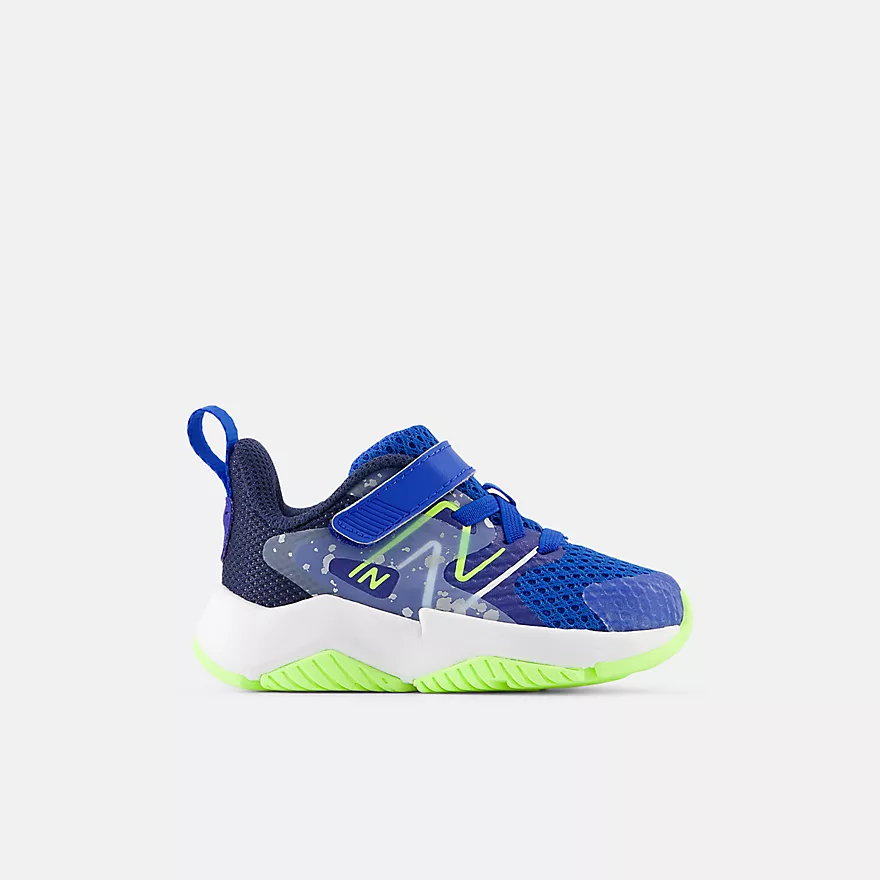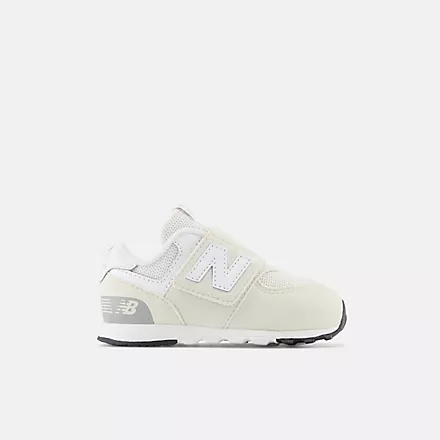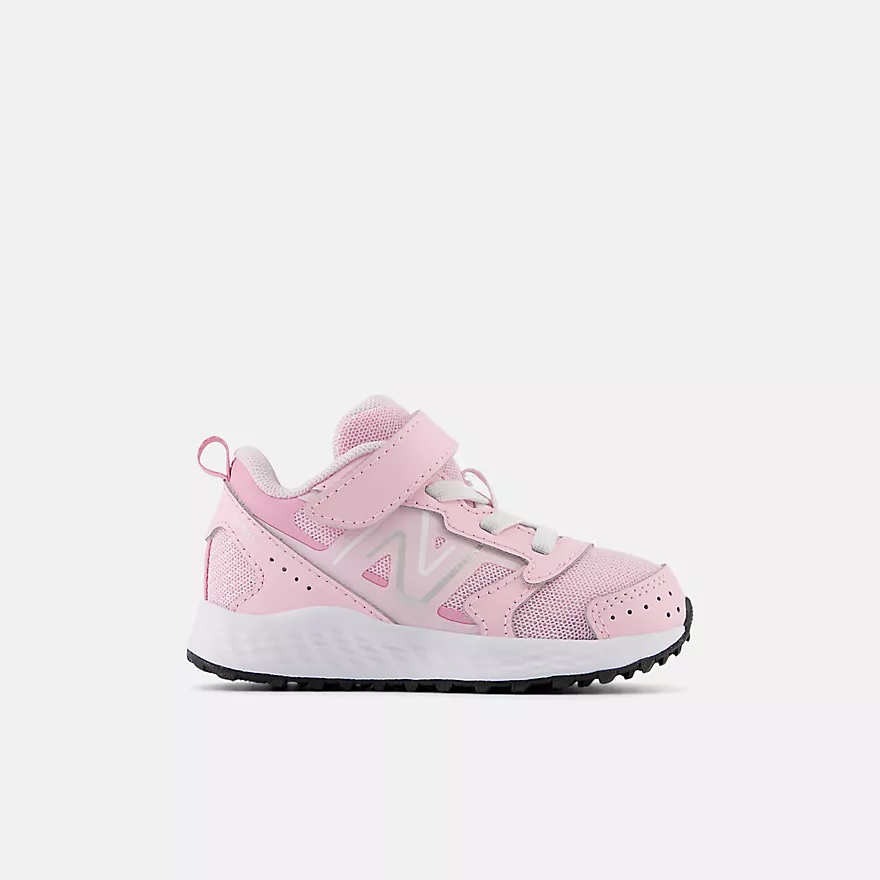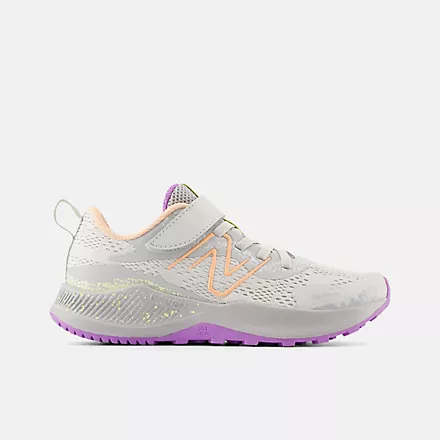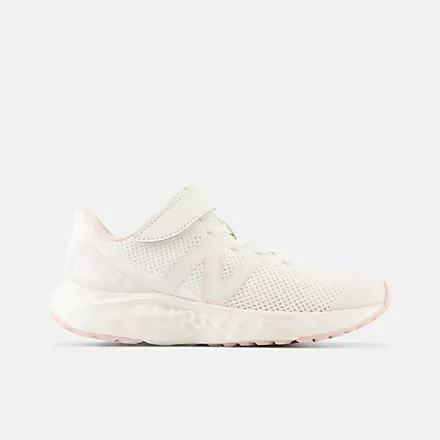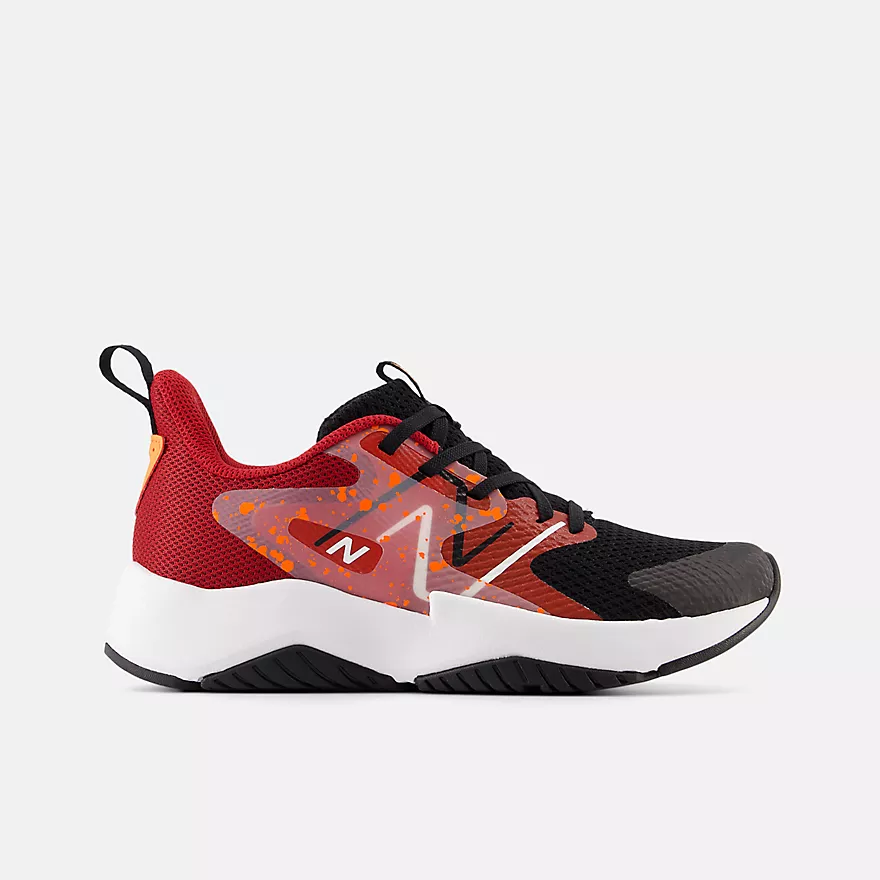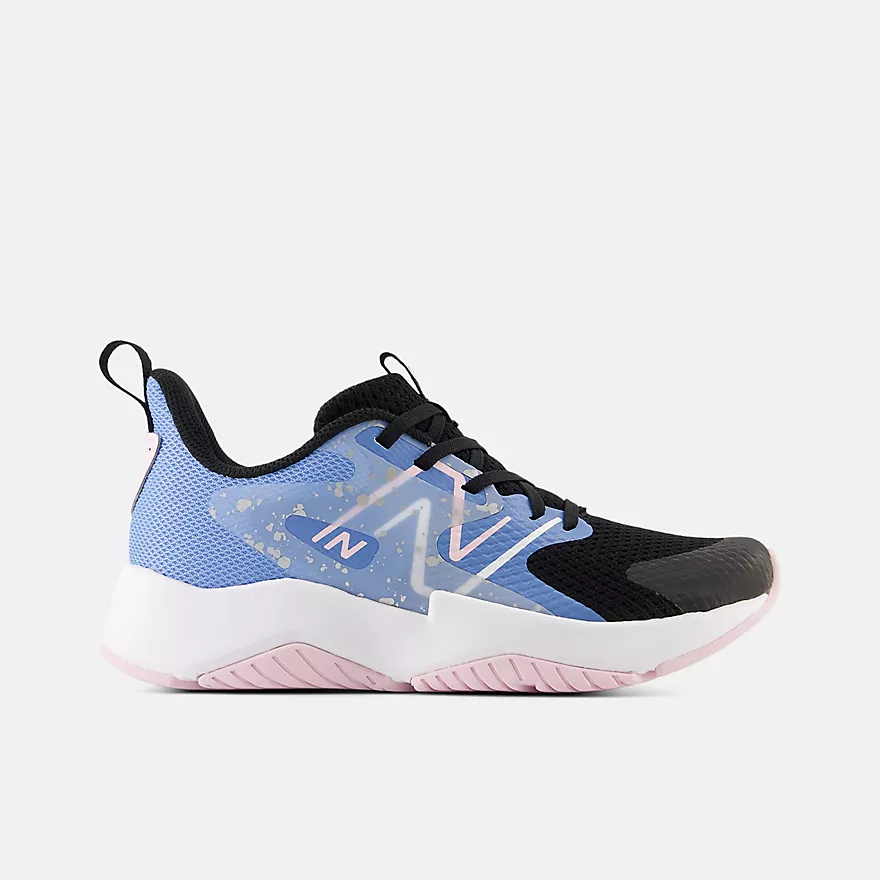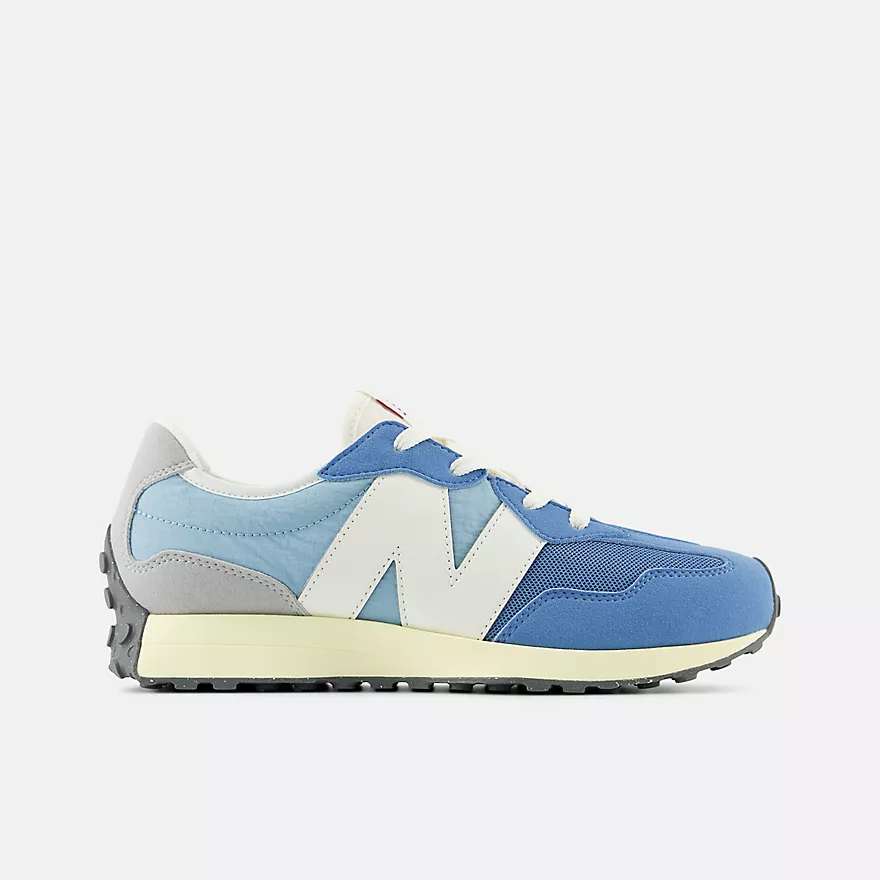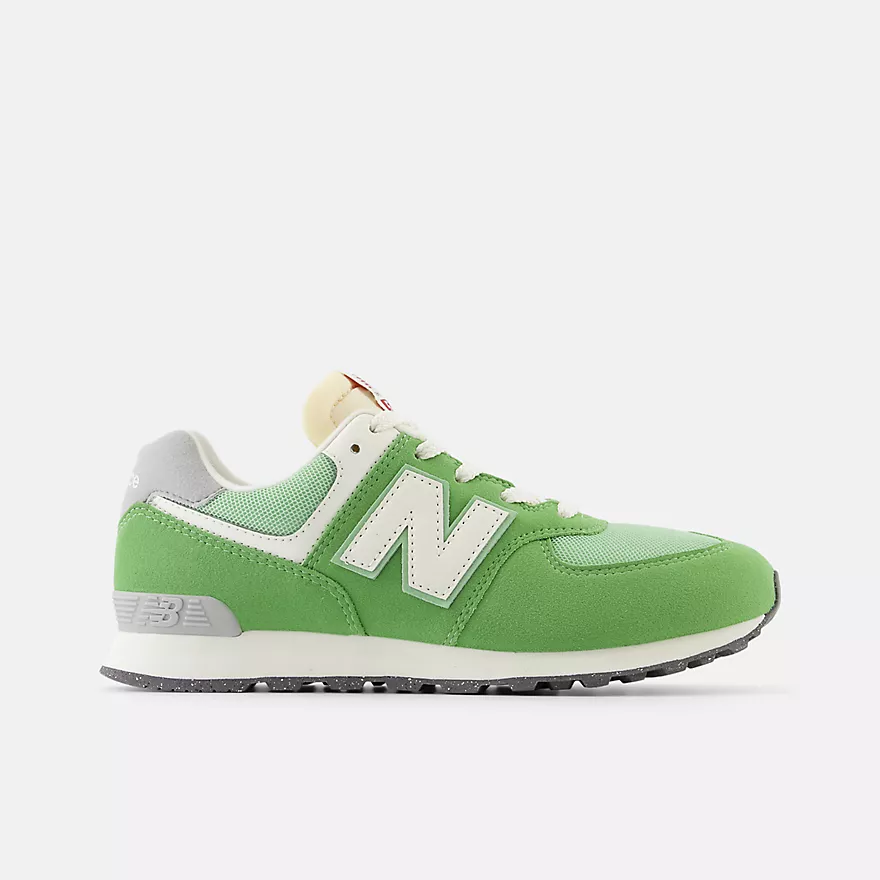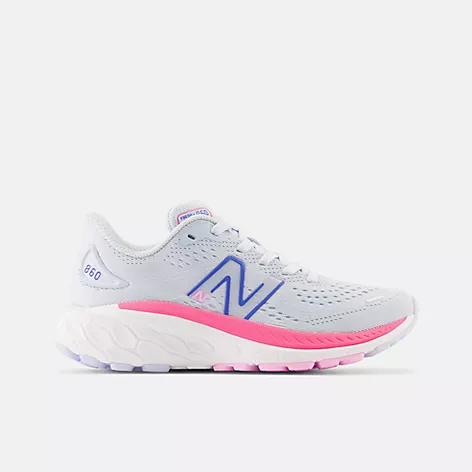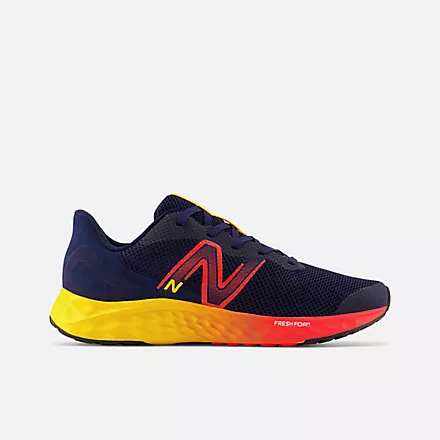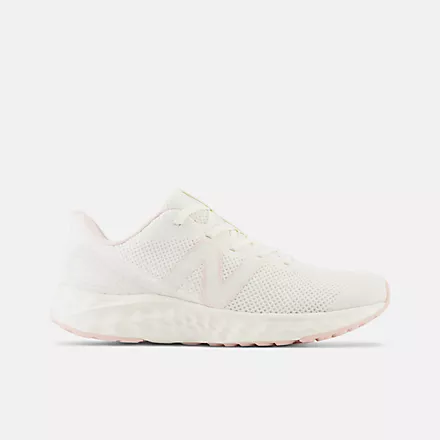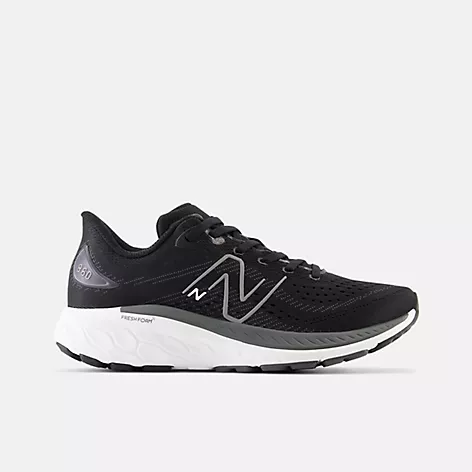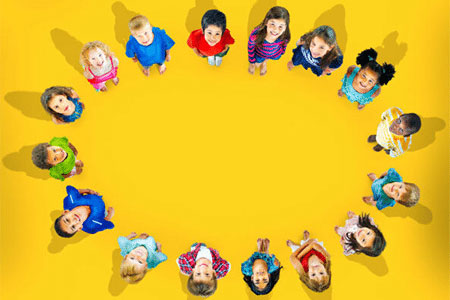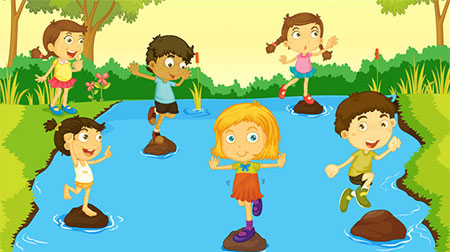The Most Comfortable Kids’ Shoes – From Their First Steps to Their Teenage Years!

I have put together a selection of the most comfortable kids’ shoes from their first steps, to their teenage years. These are the most supportive, durable, and comfortable shoes that are available in medium, wide, and extra wide widths.
If you want to keep your kids’ feet and legs healthy, you must provide them with the correct pair of shoes in the correct shoe size. Choosing the correct pair of shoes for your child will save you a lot of time and money in the long run.
What Features Should Your Kids’ Provide?
Your kids’ shoes should be lightweight and flexible to allow the feet to move naturally with a stable base of support. They should be made of leather to allow your child’s feet to breathe properly. Materials like leather and canvas are the best choices when it comes to choosing your kids’ shoes because are sturdy, breathable, and flexible. They stretch and soften with wear, which is ideal for active, growing feet.
I will provide you with a selection of the most comfortable kids’ shoes, but to be able to get your kids’ shoes online, you need to be 100% sure of your foot size.
Shoes that are too small hinder the proper growth of the foot, diminishing blood circulation, causing painful blisters, ingrown toenails and in simple words, hurt your kids’ feet. Shoes that are too large can create blisters on your children’s feet as well as compromise their stability, which leads to falls and injuries.
How to Retrieve Your Child’s Exact Foot Length and Shape
I always recommend parents take their children to their local fitting children’s shoe store that they trust, the issue is that most fitting stores have been closing down and parents need to end up buying their kids’ shoes online. There is nothing wrong with this, but you must know your child’s exact foot size to know what size to order.
I created a resource that showcases the best-fitting children’s shoe stores by state. If after looking at that resource you still can’t seem to identify a shoe store in your area, then proceed to take a look at an article I created that describes the simplest, yet most effective way to figure out your child’s foot size from home.
In that article I help parents determine their child’s exact foot size and whether the child has narrow, medium, wide, or extra wide feet. I also will be able to tell you whether your child has a high instep or not.
I only write reviews of shoe styles that I have fitted before, otherwise, I wouldn’t know how well-made they are, the amount of support that they provide, and how they fit.
Let’s take a look at the most comfortable kids’ shoes from their first steps to their teenage years. Disclosure: Some links in this post may be affiliate links and we may receive a small commission (at no extra cost to you) when you click our links and make purchases. This allows us to create free content and resources for many families around the world.
Shoes for Babies Who Are Learning How to Walk
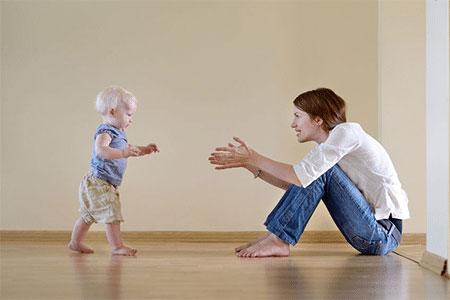
Baby feet contain more cartilage than bones. Though the feet are likely to develop completely by the age of two, the bone doesn’t develop and harden entirely until your child’s 18th birthday.
When babies are learning how to walk they need a lightweight and flexible shoe that emulates barefoot walking However, when you have your babies with you at home, leave them barefoot to allow for healthy foot development.
I always recommend that parents look out for stretchy, non-skid or skid-resistant soles for their babies’ shoes. This is because when children are learning how to walk they should wear shoes that are flexible and allow the foot to bend and move as though they were barefoot.
Soft soled shoes provide the perfect structure for a baby who is learning how to walk. These types of shoes allow children to feel the ground under their feet and better control their balance and grip on the floor. Stiff footwear can increase the occurrence of deformity, weakness, and loss of mobility in your kid’s feet. So, be prudent when choosing the first pair of walking shoes for your baby.
Certain first walker shoes come with sensory pods in the bottom to allow your babies to feel the ground underneath them. These are the type of shoes I will describe below.
Most Comfortable Shoes for Babies Who Are Learning How to Walk
These shoes are available in medium (M), wide (W), and extra wide (XW) widths, so please choose your baby’s shoe width accordingly.
Boys
- Shoe style SRT SM Artie by Stride Rite
- Available in medium, wide, and extra wide widths
- Rounded edges to decrease stumbles and falls
- APMA approved and built for first-time walkers
- Order this shoe a whole size larger than your baby’s current foot size
- Shoe style 2510 Racer by Tsukihoshi
- Fits medium and wide feet
- Heel stabilizer provides lateral stability
- Removable insoles
- Machine washable
- Order this shoe the same size as your baby’s foot size (shoe fits long)
- Shoe style Wes by Stride Rite
- Available in medium, wide, and extra wide widths
- Seamless construction cradle the baby’s natural shape
- Flexible, rounded, slip-resistant soles
- APMA approved
- Order this shoe a whole size larger than your baby’s current foot size
- Shoe style SM Adamby Stride Rite
- Available in medium and wide widths
- Seamless construction cradle the baby’s natural shape
- Flexible, rounded, slip-resistant soles
- Foam padding placed around the ankle collar and under the tongue for an incredibly comfortable fit and feel
- Order this shoe a whole size larger than your baby’s current foot size
- Shoe style Stevie II by See Kai Run
- Fits medium and wide feet
- Rubber outsole is flexible yet durable and provides the needed traction for first steps
- Padded heel and tongue keeps the baby’s feet comfortable
- Wide openings make on and off quick and easy
- Order this shoe half a size larger than your baby’s current foot size
- Shoe style Martin by Stride Rite
- Available in medium and wide widths
- Seamless construction cradle the baby’s natural shape
- Flexible, rounded, slip-resistant soles
- Oversized opening and pull tab on the back offer easy on and off
- Order this shoe a whole size larger than your baby’s current foot size
- Shoe style Kennedy by Stride Rite
- Available in medium, wide, and extra wide widths
- Seamless construction that cradles the foot’s natural shape
- APMA approved
- Oversized opening for easy-on
- Order this shoe half a size larger than your baby’s current foot size
- Shoe style SM Zip Runner by Stride Rite
- Available in medium and wide widths
- Oversized opening for easy on and off
- Flexible, rounded, slip-resistant soles encourage natural motion and help improve balance
- Machine washable
- Order this shoe a whole size larger than your baby’s current foot size
- Shoe style SRT Elliot by Stride Rite
- Available in medium, wide, and extra wide widths
- 100% leather made
- Sensory pods to feel the ground beneath for better traction and grip
- Lace-up closure
- Order this shoe a whole size larger than your baby’s current foot size
Girls
- Shoe style SM Adalyn by Stride Rite
- Available in medium, wide, and extra wide widths
- Oversized opening for easy on and off
- Flexible, rounded, slip-resistant soles encourage natural motion and help improve balance
- APMA approved
- Order this shoe a whole size larger than your baby’s current foot size
- Shoe style Zips Runner by Stride Rite
- Available in medium, wide, and extra wide widths
- Oversized opening for easy on and off
- Padded tongue and collar
- APMA approved
- Order this shoe a whole size larger than your baby’s current foot size
- Shoe style Susie Mary Jane by See Kai Run
- Fits medium and wide feet
- Black patent leather upper with full leather lining and insole
- Awarded the Seal of Acceptance from the American Podiatric Medical Association (APMA)
- Order this shoe half a size larger than your baby’s current foot size
- Shoe style Soft Motion Baby by Stride Rite
- Available in medium, wide, and extra wide widths
- Oversized opening for easy on and off
- Flexible, rounded, slip-resistant soles encourage natural motion and help improve balance
- APMA approved
- Order this shoe half a size larger than your baby’s current foot size
- Shoe style Stevie II by See Kai Run
- Fits medium and wide feet
- Rubber outsole is flexible yet durable and provides the needed traction for first steps
- Padded heel and tongue keeps the baby’s feet comfortable
- Wide openings make on and off quick and easy
- Order this shoe half a size larger than your baby’s current foot size
- Shoe style Thompson by Stride Rite
- Available in medium and wide widths
- Oversized opening for easy on and off
- Flexible, rounded, slip-resistant soles encourage natural motion and help improve balance
- APMA approved
- Order this shoe a whole size larger than your baby’s current foot size
- Shoe style SRT Elliot by Stride Rite
- Available in medium, wide, and extra wide widths
- 100% leather made
- Sensory pods to feel the ground beneath for better traction and grip
- Lace-up closure
- Order this shoe a whole size larger than your baby’s current foot size
- Shoe style Soft Motion Baby by Stride Rite
- Available in medium, wide, and extra wide widths
- Over-sized opening for easy on/off
- APMA approved and built for first-time walkers
- Order this shoe a whole size larger than your baby’s current foot size
- Shoe style StevieII by See Kai Run
- Fits medium and wide feet
- Rubber outsole is flexible yet durable and provides the needed traction for first steps
- Padded heel and tongue keeps the baby’s feet comfortable
- Wide openings make on and off quick and easy
- Order this shoe half a size larger than your baby’s current foot size
Babies who are only crawling don’t really need shoes. However, they do need booties or pre-walking shoes that don’t bind their feet but do allow them to explore. The shoes need to be flexible instead of providing rigid support. The only function of shoes for crawlers is to provide warmth and protection. You can take a look at the articles on newborn crochet booties and Robeez baby shoes.
Shoes for Toddlers Who Started Walking
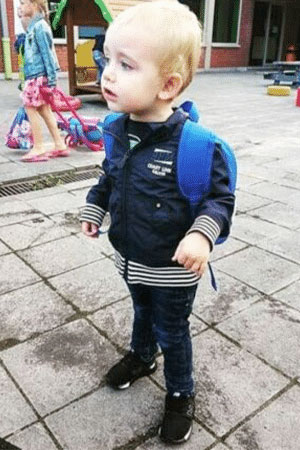
If you have a toddler who is already walking or almost fully stable when walking, you will need a pair of shoes that are still lightweight and flexible but more substantial. We still want the shoes to be lightweight and flexible, but they must also provide more lateral support since your toddlers are on their feet all the time now, putting more pressure on their feet and legs.
You will also notice your kids’ feet starting to sweat more. Did you know that kids’ feet sweat about 2 to 3 times more than the adult’s feet? This is one reason why children’s shoes wear down faster than those of adults. However, sweat is not just a concern for the durability of the shoes but also the health of your children’s feet.
Sweaty feet are more vulnerable to foot fungus, rashes and infections. This is why you must highly consider a breathable shoe to allow moisture and heat to escape from your children’s feet and allow cool air to come in. The shoes I describe below are ideal for toddlers who are already walking or on the verge of learning how to walk.
Most Comfortable Shoes for Toddlers
I always advise parents to choose shoes with rubber soles for good traction, thereby preventing slipping or sliding. Below you can find a selection of the best shoes for toddlers (2 and 3 years old) with medium or wide feet.
Boys
- Shoe style Fresh Foam 650 by New Balance
- Fits toddlers with medium, wide, or extra wide feet
- Oversized opening for easy on and off
- Fresh Foam midsole cushioning is precision engineered to deliver an ultra-cushioned, lightweight ride
- Hook and loop closure
- Order this shoe a whole size larger than your toddler’s current foot size
- Shoe style Ride 10 J by Saucony
- Available in medium, wide, and extra wide widths
- Velcro closure
- Leather and mesh upper for durability and breathability
- APMA Certified
- Traction pods on the outsole for serious grip
- EVA midsole for lightweight feel
- Order this shoe a whole size larger than your toddler’s current foot size
- Shoe style SRT Winslow by Stride Rite
- Available in medium and wide widths
- Toe cap reinforcement and bumptoe protection against stumbles
- Opens super wide which makes in and out easy
- Step-stabilizing design with comfy Ortholite memory foam footbeds
- Order this shoe half a size larger than your toddler’s current foot size
- Shoe style RaveRun by New Balance
- Available in medium, wide and extra wide widths
- Oversized opening for easy on and off
- Lightweight injection-molded EVA foam midsole provides lightweight cushioning
- Hook and loop closure
- Order this shoe a whole size larger than your toddler’s current foot size
- Shoe style Stevie II by See Kai Run
- Fits medium and wide feet (accommodates high insteps)
- Breathable textile lining and cushioned insole
- Hook and loop closure
- Padded tongue and collar for added comfort
- Order this shoe a half size larger than your toddler’s current foot size
- Shoe style 2510 Racer by Tsukihoshi
- Fits medium and wide feet (fits high insteps)
- Hook-and-loop closure
- Removable insoles
- Lightweight and flexible
- Extra wide toe box allows natural splaying of toes for better balance, comfort, and foot health
- Long heel counter provides stability
- Machine washable
- Order this shoe the same size as your toddler’s current foot size (shoe fits long)
- Shoe style Jazz Lite 2.0 by Saucony
- Available in medium and wide widths
- Leather and mesh upper for durability and breathability
- Hook-and-loop strap closure with elastic lace panel
- Anti-stink lining helps reduce odors
- Machine washable for quick and easy clean
- Order this shoe a half size larger than your toddler’s current foot size
- Shoe style 574 New-B by New Balance
- Available in medium, wide, and extra wide widths
- Velcro closure
- Generous toe box and instep to accommodate and support a first-walker’s needs
- Rubber outsole pods designed to stand up to daily wear and tear
- Extra deep
- Order this shoe a whole size larger than your toddler’s current foot size
- Shoe style 574 New-b V1 by New Balance
- Available in medium, wide, and extra wide widths
- Velcro closure
- Generous toe box and instep to accommodate and support a first-walker’s needs
- Rubber outsole pods designed to stand up to daily wear and tear
- Extra deep
- Order this shoe a whole size larger than your toddler’s current foot size
Girls
- Shoe style RaveRun by New Balance
- Fits toddlers with medium, wide, or extra wide feet
- Oversized opening for easy on and off
- Fresh Foam midsole cushioning is precision engineered to deliver an ultra-cushioned, lightweight ride
- Hook and loop closure
- Order this shoe a whole size larger than your toddler’s current foot size
- Shoe style Ride 10 J by Saucony
- Available in medium, wide, and extra wide widths
- Velcro closure
- Leather and mesh upper
- Non-marking traction pods to help improve stability
- APMA approved
- Toe cap for extra durability
- Order this shoe a whole size larger than your toddler’s current foot size
- Shoe style 2510 Racer by Tsukihoshi
- Fits medium and wide feet (fits high insteps)
- Velcro closure
- Heel stabilizer provides lateral stability
- Removable insoles
- The insoles are Infused with natural Green Tea extract (no chemicals)
- Machine washable
- Order this shoe the same size as your toddler’s current foot size (shoe fits long)
- Shoe style 574 NEW-B by New Balance
- Available in medium, wide, and extra wide widths (fits high insteps)
- Hook and loop closure system for easy on and off
- Synthetic/mesh upper
- Fresh Foam midsole cushioning is precision engineered to deliver an ultra-cushioned, lightweight ride
- Order this shoe a half size larger than your child’s current foot size
- Shoe style Stevie II by See Kai Run
- Fits medium and wide feet
- Canvas upper
- Toe cap is durable for early steps
- Double velcro straps
- Oversized opening for easy on and off
- APMA approved
- Order this shoe half a size larger than your toddler’s current foot size
- Shoe style Sr Thompson by Stride Rite
- Available in medium and wide widths
- Ortholite memory foam footbeds
- Opens super wide which makes in and out easy
- Recycled material linings to help reduce odor
- Order this shoe half a size larger than your toddler’s current foot size
- Shoe style RaveRun by New Balance
- Available in medium, wide and extra wide widths
- Oversized opening for easy on and off
- Lightweight injection-molded EVA foam midsole provides lightweight cushioning
- Hook and loop closure
- Order this shoe a whole size larger than your toddler’s current foot size
- Shoe style Kya by See Kai Run
- Fits wide and extra wide feet
- Leather and mesh upper
- Two adjustable hook-and-loop closures for easy on and off
- Padded tongue and collar for added comfort
- APMA approved
- Toe cap for extra durability
- Order this shoe a whole size larger than your toddler’s current foot size
- Shoe style 574 New-b V1 by New Balance
- Available in medium, wide, and extra wide widths
- Velcro closure
- Generous toe box and instep to accommodate and support a first-walker’s needs
- Rubber outsole pods designed to stand up to daily wear and tear
- Extra deep
- Order this shoe a whole size larger than your toddler’s current foot size
- Shoe style Fresh Foam 650 by New Balance
- Available in medium, wide and extra wide widths
- Oversized opening for easy on and off
- No-sew overlays
- Order this shoe a whole size larger than your toddler’s current foot size
Shoes for Kids Between the Ages of 4 and 9
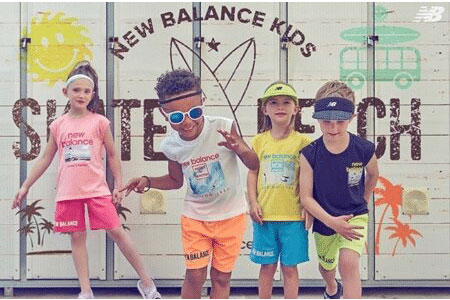
Did you know that our children’s feet are known to withstand 3 times more stress than the average adult’s feet? This is because children take part in numerous high-impact activities. Because children’s feet endure high stress, children must wear shoes with good shock absorption, a well-made footbed, and durable soles.
Flexibility also plays a huge role when you are choosing shoes for your kids because it helps them strengthen the muscles of the feet on their own.
So, what type of materials should shoes be made of for children between these ages? Their shoes should be made of leather, canvas or the newer mesh materials to allow sweat from the feet to evaporate after perspiration.
Most Comfortable Shoes for Kids Ages 4 to 9
The shoes below can fit children with medium (M), wide (W), or extra wide feet (XW).
Toddler Shoe Sizes (0 to 10)
- Shoe style RaveRun by New Balance
- Available in medium, wide and extra wide widths
- Oversized opening for easy on and off
- Lightweight injection-molded EVA foam midsole provides lightweight cushioning
- Hook and loop closure
- Order this shoe a whole size larger than your toddler’s current foot size
- Shoe style RaveRun by New Balance
- Available in medium, wide and extra wide widths
- Oversized opening for easy on and off
- Lightweight injection-molded EVA foam midsole provides lightweight cushioning
- Hook and loop closure
- Order this shoe a whole size larger than your toddler’s current foot size
- Shoe style Original Jazz Lite 2.0 by Saucony
- Available in medium and wide widths
- Velcro closure
- Leather and mesh upper for durability and breathability
- APMA Certified
- Traction pods on the outsole for serious grip
- EVA midsole for lightweight feel
- Order this shoe a whole size larger than your toddler’s current foot size
- Shoe style Ride 10 Jr by Saucony
- Available in medium, wide, and extra wide widths
- Velcro closure
- Leather and mesh upper
- Non-marking traction pods to help improve stability
- APMA approved
- Toe cap for extra durability
- Order this shoe a whole size larger than your toddler’s current foot size
- Shoe style 2510 by Tsukihoshi
- Fits medium and wide feet (fits high insteps)
- Velcro closure
- Removable insoles
- Lightweight and flexible
- Extra wide toe box allows natural splaying of toes for better balance, comfort, and foot health
- Long heel counter provides stability
- Machine washable
- Order this shoe the same size as your toddler’s current foot size (shoe fits long)
- Shoe style 2510 by Tsukihoshi
- Fits medium and wide feet (fits high insteps)
- Velcro closure
- Heel stabilizer provides lateral stability
- Removable insoles
- The insoles are Infused with natural Green Tea extract (no chemicals)
- Machine washable
- Order this shoe the same size as your toddler’s current foot size (shoe fits long)
- New Balance shoe style Fresh Foam 650
- Fits children with medium, wide, or extra wide feet
- Velcro closure
- Leather and mesh upper
- Mesh collar and tongue are padded with foam for a great fit and added comfort
- Extra deep
- Order this shoe a whole size larger than your toddler’s current foot size
- Shoe style 574 by New Balance
- Available in medium, wide, and extra wide widths (fits high insteps)
- Velcro closure
- Oversized opening for easy on and off
- Fresh Foam midsole cushioning is precision engineered to deliver an ultra-cushioned, lightweight ride
- Order this shoe a whole size larger than your toddler’s current foot size
- Shoe style Fresh Foam by New Balance
- Available in medium, wide and extra wide widths
- Oversized opening for easy on and off
- Lightweight injection-molded EVA foam midsole provides lightweight cushioning
- Hook and loop closure
- Order this shoe a whole size larger than your toddler’s current foot size
- Shoe style Sr Thompson by Stride Rite
- Available in medium and wide widths (fits high insteps)
- Velcro closure
- Ortholite memory foam footbeds
- Opens super wide which makes in and out easy
- Recycled material linings to help reduce odor
- Order this shoe half a size larger than your toddler’s current foot size
- Shoe style SRT Winslow by Stride Rite
- Available in medium and wide widths (fits high insteps)
- Velcro closure
- Toe cap reinforcement and bumptoe protection against stumbles
- Opens super wide which makes in and out easy
- Step-stabilizing design with comfy Ortholite memory foam footbeds
- Order this shoe half a size larger than your toddler’s current foot size
- Shoe style Fresh 574 by New Balance
- Available in medium, wide and extra wide widths
- Oversized opening for easy on and off
- No-sew overlays
- Order this shoe a whole size larger than your toddler’s current foot size
- See Kai Run shoe style Robyne
- Fits children with medium, wide, or extra wide feet
- Breathable textile lining and cushioned insole
- Double velcro straps for easy on and off adjustability
- Padded tongue and collar for added comfort
- Order this shoe a half size larger than your toddler’s current foot size
- See Kai Run shoe style Robyne
- Fits children with medium, wide, or extra wide feet
- Canvas upper
- Toe cap is durable for early steps
- Double velcro straps
- Oversized opening for easy on and off
- APMA approved
- Order this shoe half a size larger than your toddler’s current foot size
- Shoe style 574 New-b V1 by New Balance
- Available in medium, wide, and extra wide widths (fits high insteps)
- Velcro closure
- Generous toe box and instep to accommodate and support a first-walker’s needs
- Mesh and suede upper for durability and comfort
- Extra deep
- Order this shoe a whole size larger than your toddler’s current foot size
- Shoe style 574 New-b V1 by New Balance
- Available in medium, wide, and extra wide widths (fits high insteps)
- Velcro closure
- Generous toe box and instep to accommodate and support a first-walker’s needs
- Mesh and suede upper for durability and comfort
- Extra deep
- Order this shoe a whole size larger than your toddler’s current foot size
Little and Big Kid Sizes (10.5 to 7)
- Shoe style RaveRun by New Balance
- Available in medium, wide, and extra wide widths
- Velcro closure
- Synthetic and engineered mesh upper
- Stitched-on toe cap for extra durability
- Order this shoe a half size larger than your child’s current foot size
- Shoe style Nitrel v5 by New Balance
- Available in medium and wide widths
- Velcro closure
- Synthetic and engineered mesh upper
- Stitched-on toe cap for extra durability
- Order this shoe a half size larger than your child’s current foot size
- Shoe style Russell by See Kai Run
- Fits medium, wide, and extra wide feet (fits high insteps)
- Double velcro straps
- Removable, contoured, leather-lined footbed for breathability and comfort
- Lightweight and flexible
- Order this shoe a half size larger than your child’s current foot size
- Shoe style Robyn by See Kai Run
- Fits medium, wide, and extra wide feet (fits high insteps)
- Double velcro straps
- Removable, contoured, leather-lined footbed for breathability and comfort
- Lightweight and flexible
- Order this shoe a half size larger than your child’s current foot size
- Shoe style Velocity by Tsukihoshi
- Fits medium and wide feet (fits high insteps)
- Velcro closure
- Heel stabilizer provides stability
- Removable insoles
- The insoles are Infused with natural Green Tea extract (no chemicals)
- Machine washable
- Order this shoe the same size as your child’s current foot size (shoe fits long)
- Shoe style 3584 Rainbow by Tsukihoshi
- Fits medium and wide feet (fits high insteps)
- Velcro closure
- Removable insoles
- The insoles are Infused with natural Green Tea extract (no chemicals)
- Machine washable
- Order this shoe the same size as your child’s current foot size (shoe fits long)
- Shoe style Fresh Foam 650 Bungee by New Balance
- Available in medium, wide, and extra wide widths (fits high insteps)
- Velcro closure
- Mesh collar and tongue are padded with foam for a comfortable fit
- Fresh Foam midsole cushioning is precision engineered to deliver an ultra-cushioned, lightweight ride
- Order this shoe a whole size larger than your child’s current foot size
- Shoe style Fresh Foam Arishi v4 by New Balance
- Available in medium, wide, and extra wide widths (fits high insteps)
- Velcro closure
- Synthetic and engineered mesh upper
- Durable rubber outsole designed to withstand wear-and-tear
- Order this shoe a half size larger than your child’s current foot size
- Shoe style Arishi v4 by New Balance
- Available in medium, wide, and extra wide widths (fits high insteps)
- Velcro closure
- Mesh collar and tongue are padded with foam for a comfortable fit
- Fresh Foam midsole cushioning is precision engineered to deliver an ultra-cushioned, lightweight ride
- Order this shoe a whole size larger than your child’s current foot size
- The New Balance shoe style RaveRun is available for little and big kids
- Fits children with medium, wide, or extra wide feet
- Available in laces
- No-sew overlays for a sleek fit and feel
- Mesh collar and tongue are padded with foam for a great fit and added comfort
- Order this shoe half a size larger than your child’s current foot size
- The New Balance shoe style RaveRun is available for little and big kids
- Fits children with medium, wide, or extra wide feet
- Available in laces
- Leather and mesh upper
- No-sew overlays for a sleek fit and feel
- Order this shoe half a size larger than your child’s current foot size
- Shoe style Axon by Saucony
- Available in medium and wide widths
- EVA midsole provides increased shock attenuation, responsive cushioning and lasting durability
- Cushioned footbed
- Order this shoe a whole size larger than your child’s current foot size
- Shoe style Axon by Saucony
- Available in medium and wide widths
- EVA midsole provides increased shock attenuation, responsive cushioning and lasting durability
- Padded tongue and collar
- Cushioned footbed
- Order this shoe a whole size larger than your child’s current foot size
- New Balance shoe style Fresh Foam 880v12
- Fits children with medium, wide, or extra wide feet
- Lace-up closure
- Dual-layer midsole construction featuring top-bed foam cushioning and underfoot Fresh Foam X
- Order this shoe half a size larger than your child’s current foot size
- Shoe style 480 V1 by New Balance
- Available in medium and wide widths
- Lace-up closure
- Lightweight EVA midsole
- Leather and mesh upper for durability & breathability
- Order this shoe a whole size larger than your child’s current foot size
- Shoe style 327 by New Balance
- Available in medium and wide widths
- Lace-up closure
- FuelCell foam delivers a propulsive feel to help drive you forward
- Order this shoe a whole size larger than your child’s current foot size
- New Balance shoe style FuelCell Propel v5
- Fits children with medium, wide, or extra wide feet
- Dual-layer midsole construction featuring top-bed foam cushioning and underfoot Fresh Foam X
- Order this shoe a whole size larger than your child’s current foot size
- Shoe style 574 by New Balance
- Available in medium and wide widths
- Lace-up closure
- ENCAP midsole cushioning provides good arch and heel support
- Leather and suede upper
- Order this shoe half a size larger than your child’s current foot size
- New Balance shoe style Fresh Foam Arishi v4
- Fits children with medium, wide, or extra wide feet
- Lace-up closure
- Mesh upper is lightweight and breathable
- Lightweight EVA foam cushioning in the midsole and padded heel increases comfort
- Firm heel counter
- Supportive heel for active kids
- Order this shoe a half size larger than your child’s current foot size
The Best Shoes for Older Kids – 13 Years Old and Up

After the age of 13, children start getting involved in more competitive sports, and they increase the stress on their feet and legs to a whole new level. The insole of the shoes should be constructed out of proper absorbent material. Padded insoles are acceptable as well but most children do not require that special arch support.
At this stage, we look for shock absorption and flexibility. Let me show you a selection of the most supportive, durable, and comfortable shoes for older children.
Most Comfortable Shoes for Older Kids
Below you can find a selection of the best shoes for older kids with medium (M), wide (W), or extra wide feet (XW).
Little Kid Shoe Sizes (10.5 to 3)
- Shoe style Fresh Foam X 860v13
- Available in medium and wide widths
- Lace-up closure
- Fresh Foam midsole cushioning is precision engineered to deliver an ultra-cushioned, lightweight ride
- Ultra Heel design hugs the back of the foot for a snug, supportive fit
- Order this shoe half a size larger than your child’s current foot size
- Shoe style RaveRun by New Balance
- Available in medium, wide, and extra wide widths
- Lace-up closure
- Fresh Foam midsole cushioning is precision engineered to deliver an ultra-cushioned, lightweight ride
- Ultra Heel design hugs the back of the foot for a snug, supportive fit
- Order this shoe half a size larger than your child’s current foot size
- Shoe style Axon by Saucony
- Available in medium and wide widths
- EVA midsole provides increased shock attenuation, responsive cushioning and lasting durability
- Cushioned footbed
- Order this shoe a whole size larger than your child’s current foot size
- Shoe style Axon by Saucony
- Available in medium and wide widths
- EVA midsole provides increased shock attenuation, responsive cushioning and lasting durability
- Padded tongue and collar
- Cushioned footbed
- Order this shoe a whole size larger than your child’s current foot size
- Shoe style Fresh Foam X 860 V13 by New Balance
- Available in medium and wide widths
- Lace-up closure
- Dual-layer midsole construction featuring top-bed foam cushioning and underfoot Fresh Foam X
- Order this shoe half a size larger than your child’s current foot size
- Shoe style Fresh Foam X 860 V13 by New Balance
- Available in medium and wide widths
- Lace-up closure
- Fresh Foam midsole cushioning is precision engineered to deliver an ultra-cushioned, lightweight ride
- Order this shoe half a size larger than your child’s current foot size
- Shoe style RaveRun by New Balance
- Available in medium, wide, and extra wide widths (fits high insteps)
- Lace-up closure
- Dual-layer midsole construction featuring top-bed foam cushioning and underfoot Fresh Foam X
- Order this shoe half a size larger than your child’s current foot size
- Shoe style Fresh Foam X 860v13 by New Balance
- Available in medium and wide widths
- Lace-up closure
- Strong rubber outsole and cushioned midsoles
- Order this shoe half a size larger than your child’s current foot size
- Shoe style TR14 LTT by Saucony
- Available in medium and wide widths
- Lace-up closure
- Foam padding placed around your ankle collar and under the tongue for an incredibly comfortable fit and feel
- Comfort sockliner molds to your foot with padding in the heel for ultimate cushioning at heel-strike
- Engineered mesh for structure, stretch and enhanced breathability
- Order this shoe half a size larger than your child’s current foot size
- Shoe style Cohesion TR14 LTT by Saucony
- Available in medium and wide widths
- Lace-up closure
- Foam padding placed around your ankle collar and under the tongue for an incredibly comfortable fit and feel
- Comfort sockliner molds to your foot with padding in the heel for ultimate cushioning at heel-strike
- Engineered mesh for structure, stretch and enhanced breathability
- Order this shoe half a size larger than your child’s current foot size
Big Kid Shoe Sizes (3.5 to 7)
- Shoe style Fresh Foam Arishi by New Balance
- Available in medium and wide widths
- Lace-up closure
- Fresh Foam midsole cushioning is precision engineered to deliver an ultra-cushioned, lightweight ride
- Ultra Heel design hugs the back of the foot for a snug, supportive fit
- Order this shoe half a size larger than your child’s current foot size
- Shoe style Fresh Foam Arishi v4 by New Balance
- Available in medium, wide, and extra wide widths
- Lace-up closure
- Fresh Foam midsole cushioning is precision engineered to deliver an ultra-cushioned, lightweight ride
- Ultra Heel design hugs the back of the foot for a snug, supportive fit
- Order this shoe half a size larger than your child’s current foot size
- Shoe style Kinvara by Saucony
- Available in medium and wide widths
- EVA midsole provides increased shock attenuation, responsive cushioning and lasting durability
- Padded tongue and collar
- Cushioned footbed
- Order this shoe a whole size larger than your child’s current foot size
- Shoe style Kinvara by Saucony
- Available in medium and wide widths
- Foam padding placed around your ankle collar and under the tongue for an incredibly comfortable fit and feel
- Comfort sockliner molds to your foot with padding in the heel for ultimate cushioning at heel-strike
- Engineered mesh for structure, stretch and enhanced breathability
- Order this shoe half a size larger than your child’s foot size
- Shoe style RaveRun by New Balance
- Available in medium, wide, and extra wide widths (fits high insteps)
- Lace-up closure
- Dual-layer midsole construction featuring top-bed foam cushioning and underfoot Fresh Foam X
- Order this shoe half a size larger than your child’s current foot size
- Shoe style RaveRun by New Balance
- Available in medium, wide, and extra wide widths
- Lace-up closure
- Fresh Foam midsole cushioning is precision engineered to deliver an ultra-cushioned, lightweight ride
- Ultra Heel design hugs the back of the foot for a snug, supportive fit
- Order this shoe half a size larger than your child’s current foot size
- Shoe style Fresh Foam X 880v12 by New Balance
- Available in medium and wide widths (fits high insteps)
- Lightweight EVA foam cushioning in the midsole and padded heel increases comfort
- Firm heel counter
- Supportive heel for active kids
- Breathable mesh upper
- Order this shoe a whole size larger than your child’s current foot size
- Shoe style FuelCell Propel v5 by New Balance
- Available in medium and wide widths (fits high insteps)
- Lace-up closure
- Dual-layer midsole construction featuring top-bed foam cushioning and underfoot Fresh Foam X
- Order this shoe a whole size larger than your child’s current foot size
- Shoe style Kinvara 14 by Saucony
- Available in medium and wide widths
- Lace-up closure
- Lightweight mesh upper
- Fresh Foam midsole cushioning is precision engineered to deliver an ultra-cushioned, lightweight ride
- Order this shoe half a size larger than your child’s current foot size
- Shoe style Arishi Fresh Foam by New Balance
- Available in medium, wide, and extra wide widths (fits high insteps)
- Fresh Foam midsole cushioning is precision engineered to deliver an ultra-cushioned, lightweight ride
- Lightweight mesh upper
- Order this shoe a whole size larger than your child’s current foot size
- Shoe style Axon by Saucony
- Available in medium and wide widths
- EVA midsole provides increased shock attenuation, responsive cushioning and lasting durability
- Cushioned footbed
- Order this shoe a whole size larger than your child’s current foot size
Unsure About What Shoe Size You Should Order?
In each of the descriptions of the shoes, I indicate whether you need to order a half size or a whole size bigger than your child’s current foot size to provide the correct amount of growing room.
*A half a size bigger translates to 3/16 of an inch or 0.4 centimeters of space between your child’s longest toe and the end of the shoes.
*A whole size bigger translates to 3/8 of an inch or 0.8 centimeters of space between your child’s longest toe and the end of the shoes.
Are Any Other Shoe Choices Available?
If none of these shoes are available in your child’s shoe size or if you need the shoes to be made of a specific color don’t hesitate to email me to: [email protected]
It is important to wear the right shoes for different activities to prevent foot problems and injuries. I presented you with a description of reasonably-priced, good quality, best-fitting shoes that are available in different widths.
Have you found a particular shoe style or shoe brand that has worked well for your child’s feet? Please share your findings in the comments section below so other parents can benefit from your feedback.






















